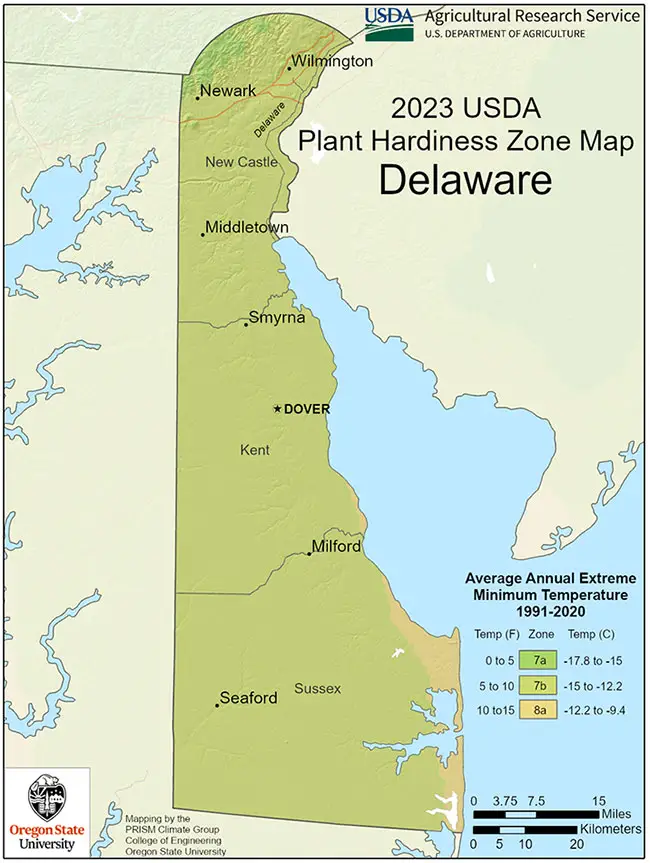
Delaware might not be the ideal locale for growing palm trees, primarily due to its temperate and humid climate with a limited number of sunny days. The state experiences a climate that’s a mix of humid subtropical and continental, heavily influenced by the Atlantic Ocean.
Southern Delaware enjoys a milder climate compared to the northern regions. In July, the average temperature hovers around 76°F (24°C), while January brings an average temperature of approximately 31°F (–1°C).
Delaware has seen temperature extremes, with the highest reaching 110°F (43°C) and the lowest plummeting to –17°F (–27°C). The USDA hardiness zones in Delaware encompass zones 7a to 7b.
Growing Palm Trees in Delaware
As is the case in many states with temperate and humid climates, cultivating palm trees in Delaware can be quite challenging without the aid of a microclimate.
It’s crucial to select robust and hardy palm species that can withstand varying conditions, and it’s wise to provide protection during cold spells to ensure their survival. Some of the palms that can be grown in Delaware are:
- European Fan Palm Tree – Zones 7b-11 (5 to 10 F)
- Pindo Palm Tree – Zones 7b-11 (5 to 10 F)
- Sago Palm Tree – Zones 7b-11 (5 to 10 F)
- Saw Palmetto Palm Tree – Zones 7a-11 (0 to 5 F)
- Windmill Palm Tree – Zones 7b-11 (5 to 10 F)
More Palm Trees»
Major Cities in Delaware
Wilmington – Hardiness Zone 7a
